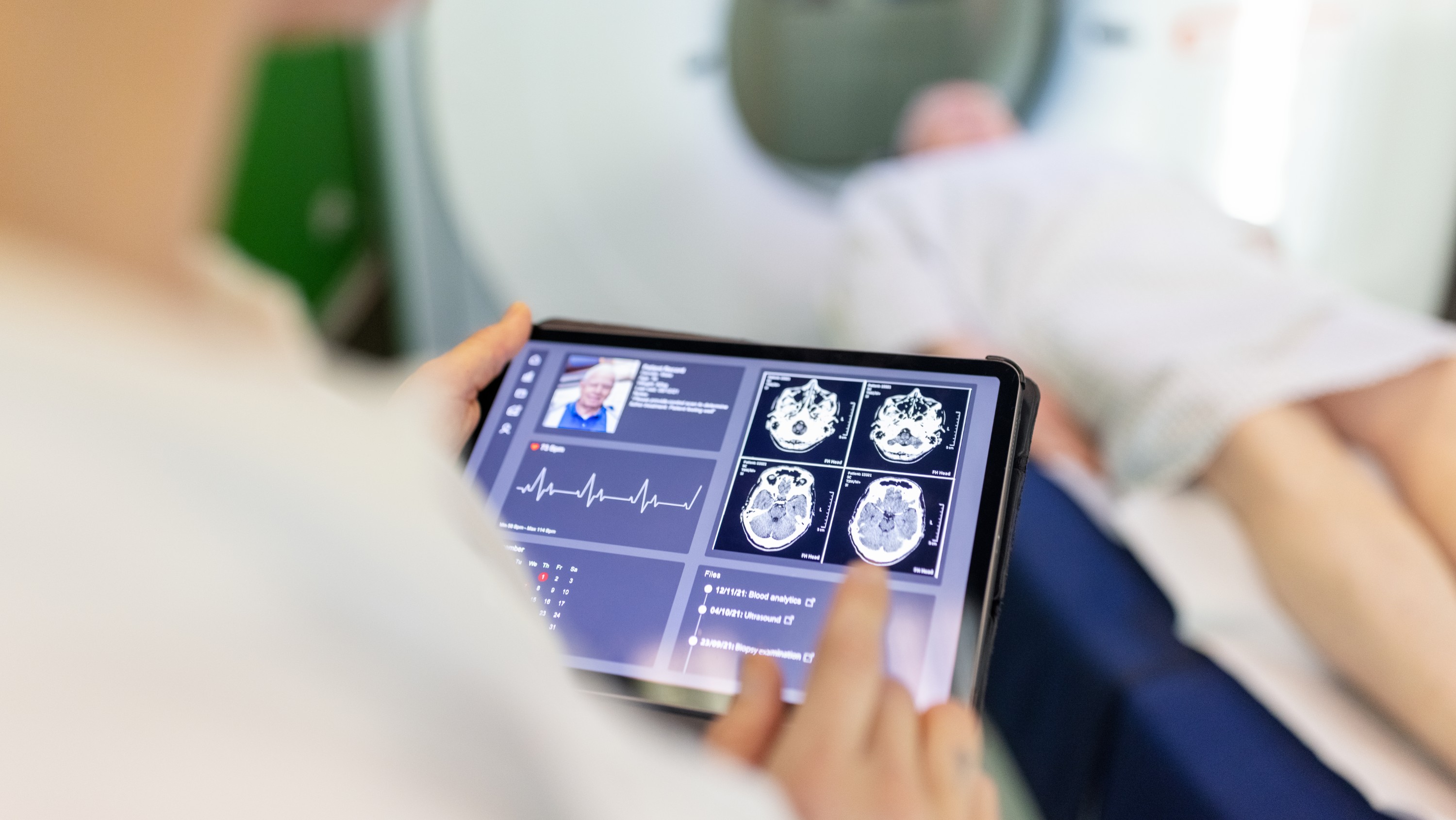An AI project, by DoM's Dr. Brian Buck and team, aims to diagnose stroke more accurately so patients can get faster treatment
29 May 2024

By Gillian Rutherford, Folio
A University of Alberta research team will use artificial intelligence to diagnose and treat stroke patients more quickly and easily, potentially saving lives and improving prognosis. The research is funded by a grant from Alberta Innovates.
The project — entitled “An agile AI pipeline for urgent health conditions requiring diagnostic imaging” — will receive $799,662 over three years from a fund aimed at improving health care using AI applications. It is one of five newly funded U of A projects announced today.
“Our program provides the necessary research funding to help companies and innovators identify and overcome roadblocks to the broader use of artificial intelligence,” says Laura Kilcrease, CEO of Alberta Innovates. “The goal is faster and better health care for Albertans and the development of new technologies right here in Alberta that can be exported around the world.”
The goal of the project is to develop a software program that augments the information available from brain scans taken with existing CT technology. Doctors will be able to look at scan results and determine whether a patient is having a stroke, how much brain tissue has been damaged, and whether the patient could benefit from reperfusion therapy — with clot-busting drugs, a procedure called endovascular thrombectomy to remove the clot from a blocked blood vessel, or both. If a patient needs a thrombectomy, they must be quickly moved to a major centre such as the University of Alberta Hospital.
Currently, of the 3,800 ischemic strokes per year in Alberta, approximately 400 patients are treated with thrombectomy. They typically have blockages in large blood vessels and more severe strokes, but their disabling symptoms can be reduced or even reversed with quick treatment.
The software will provide doctors with information that ensures the right patients receive timely access to this treatment, and prevents unnecessary and costly transfers.
“By making more accurate assessments, patients should receive the most appropriate care more quickly,” says project lead Greg Kawchuk, professor of physical therapy in the Faculty of Rehabilitation Medicine.
“These are pretty big decisions made in the emergency department,” Kawchuk says. “The new AI data on stroke will provide a better, deeper analysis. This is information that physicians are anxious to get their hands on for the benefit of their patients.”
More efficient diagnosis and treatment decisions
Strokes are much more difficult to diagnose than heart attacks, for example, because there is no definitive scan or blood test, explains research team member Brian Buck, associate professor of neurology in the Faculty of Medicine & Dentistry and co-chair of an Alberta Health Services working group on stroke. Current CT scans help to rule out other potential causes for stroke symptoms such as a brain tumour or hemorrhage. The new system will provide a blood flow map and highlight blocked arteries, which will aid doctors in making quicker diagnoses and treatment decisions.
The project will use CT scans and AI software to help neurologists quickly decide whether a patient is having or has had a stroke, which blood vessel is blocked and whether there is brain tissue to save by opening the blocked vessel with thrombectomy.
“If all those are a yes, then the next step is often to get the patient to the University of Alberta Hospital as quickly as possible,” says Buck. “We’re trying to improve access to clot-removing treatments for stroke patients across the province when we only have two sites in the province that are able to offer thrombectomy.” The second site is in Calgary, but this particular research project deals with communities in northern Alberta.